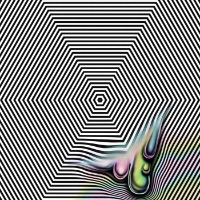- Digital
Philip Corner
Gong/Ear: Shaman
The Wormhole
- Cat No: WHO09
- Release: 2021-07-23
- updated:
Track List
-
1. Philip Corner - Schloß Elmau, June 20, 1988
12:49 -
2. Philip Corner - Trento, July 2, 1988
17:27 -
3. Philip Corner - New York, April 22, 1989
35:15
16bit/44.1khz [wav/flac/aiff/alac/mp3]
Philip Corner (b. 1933) is an American composer, musician and visual artist. His teachers include Henry Cowell and Olivier Messiaen. While on military duty in Korea in 1960-1961 he studied calligraphy with Ki-sung Kim and many of his works have calligraphic scores. A founder member of Fluxus, Corner has performed with George Maciunas, Dick Higgins, Yoko Ono and Nam June Paik. From 1967 to 1970 he taught the course in Experimental Composition at the New School for Social Research, which John Cage initiated in 1956. He was a member of Judson Dance Theater as both dancer and composer and has written scores for dance pieces by James Waring, Yvonne Rainer, Lucinda Childs and Elaine Summers among many others. He lives in Reggio nell’Emilia with his wife and performing partner, the dancer and choreographer Phoebe Neville. His wide-ranging output includes numerous works for gongs, bells, metal percussion and gamelan orchestra.
Philip Corner writes… ‘Hiah Park – new age shaman, then living in California (where else?). My Korea connexion interest led me to a workshop she gave in New York; more sessions continued until the opportunity of really working together at the proposed seminar ‘Art and the Invisible Reality’ to be held in Bavaria. I revisited my old practice of ‘metal meditations’ specially reinterpreted to go with performance/dance derived from traditional shamanic practices (of which she a certified practitioner). Then done in Trento in front of the cathedral where we joked about when they burnd witches. After the two performances in Europe our association came to an end.
Sin Cha Hong, a great friend in New York and a fabulous dancer and choreographer. Truly profound and intense body-incorporated physicality serving a spiritual content in no need of official status. Her Korean-American company she called Laughing Stone (with its implicit antipod-olarity so seeming compatible with my own expression thru music); she used my anklung (Javanese bamboo rattles) quartet gamelan Adagio onstage for one of her solos.
For many years now she has been back in the Orient. We did reconnect in 1993, performing together in the festival ‘The Seoul of Fluxus’. This recording I made alone in the New York loft with my ‘familiar’ – the large Paiste tam-tam: while holding her in my mind.
The dancer/shamans are, as their names show, from Korea – the country par excellence for this ancient form of religion incarnate. I have had a long a long continuing and most appreciative relationship to that country’s culture, from 1960 when shipped as a trombonesman to the American occupying forces there and and turned on each afternoon listening to ‘National (Kuk Ahk) Music Hour’ their theme song ‘Su Je Chun’ – the most ancient piece from the court repertoire which I have never stopped hearing as the most beautiful music ever made. That, and the breakthrough composition ‘Sang-Teh/Situations’ which written and performed in Seoul in 1961, made this meeting and working with a genuine Korean shaman a spectacular amplification of my rapport.
It was the beginning of the years-long improvisation-meditation practice shared with many other dancers, including most notably Phœbe Neville, soon to become my wife, and still is.’ – Philip Corner, Reggio nell’Emilia, 1st September, 2016.
Philip Corner writes… ‘Hiah Park – new age shaman, then living in California (where else?). My Korea connexion interest led me to a workshop she gave in New York; more sessions continued until the opportunity of really working together at the proposed seminar ‘Art and the Invisible Reality’ to be held in Bavaria. I revisited my old practice of ‘metal meditations’ specially reinterpreted to go with performance/dance derived from traditional shamanic practices (of which she a certified practitioner). Then done in Trento in front of the cathedral where we joked about when they burnd witches. After the two performances in Europe our association came to an end.
Sin Cha Hong, a great friend in New York and a fabulous dancer and choreographer. Truly profound and intense body-incorporated physicality serving a spiritual content in no need of official status. Her Korean-American company she called Laughing Stone (with its implicit antipod-olarity so seeming compatible with my own expression thru music); she used my anklung (Javanese bamboo rattles) quartet gamelan Adagio onstage for one of her solos.
For many years now she has been back in the Orient. We did reconnect in 1993, performing together in the festival ‘The Seoul of Fluxus’. This recording I made alone in the New York loft with my ‘familiar’ – the large Paiste tam-tam: while holding her in my mind.
The dancer/shamans are, as their names show, from Korea – the country par excellence for this ancient form of religion incarnate. I have had a long a long continuing and most appreciative relationship to that country’s culture, from 1960 when shipped as a trombonesman to the American occupying forces there and and turned on each afternoon listening to ‘National (Kuk Ahk) Music Hour’ their theme song ‘Su Je Chun’ – the most ancient piece from the court repertoire which I have never stopped hearing as the most beautiful music ever made. That, and the breakthrough composition ‘Sang-Teh/Situations’ which written and performed in Seoul in 1961, made this meeting and working with a genuine Korean shaman a spectacular amplification of my rapport.
It was the beginning of the years-long improvisation-meditation practice shared with many other dancers, including most notably Phœbe Neville, soon to become my wife, and still is.’ – Philip Corner, Reggio nell’Emilia, 1st September, 2016.



